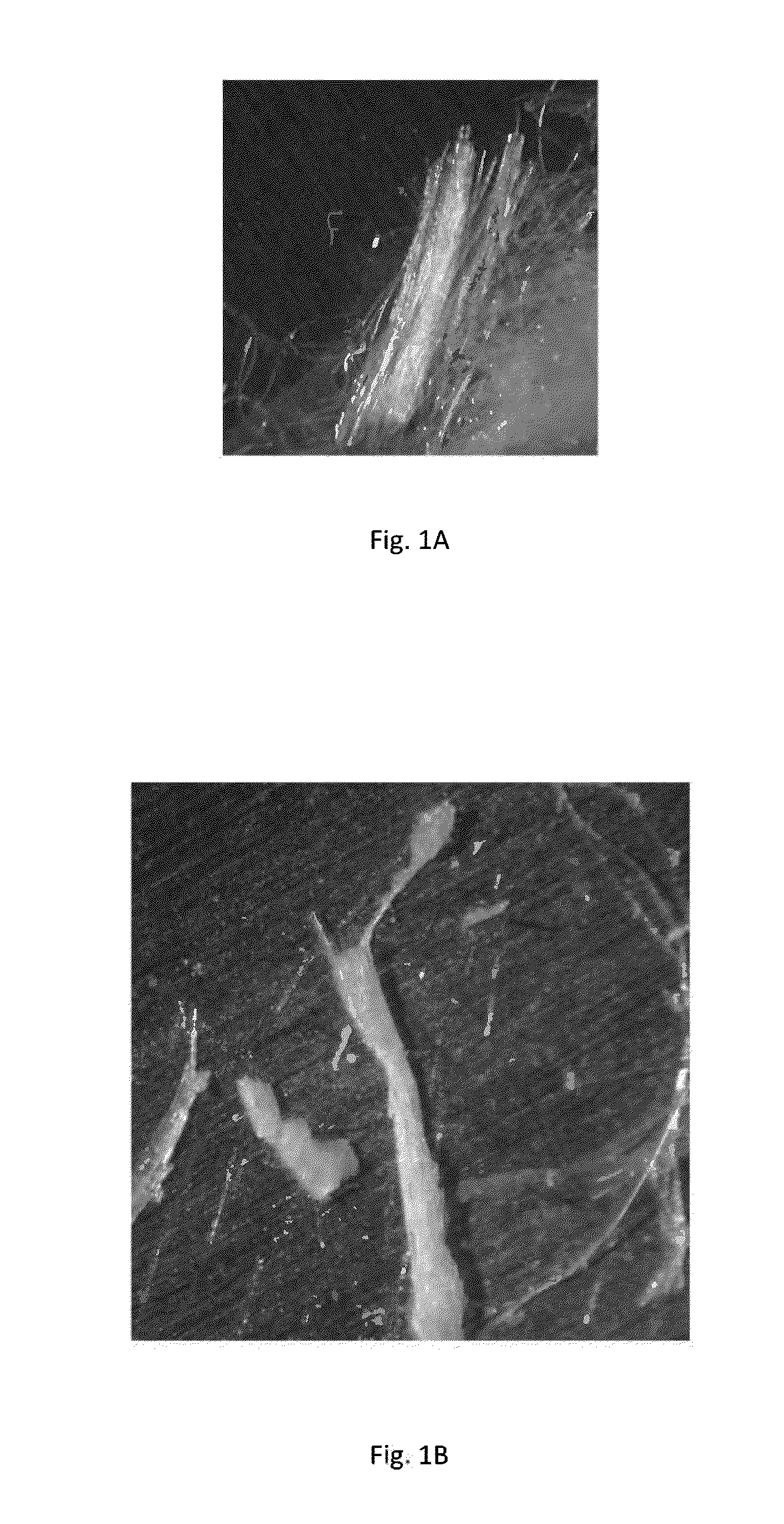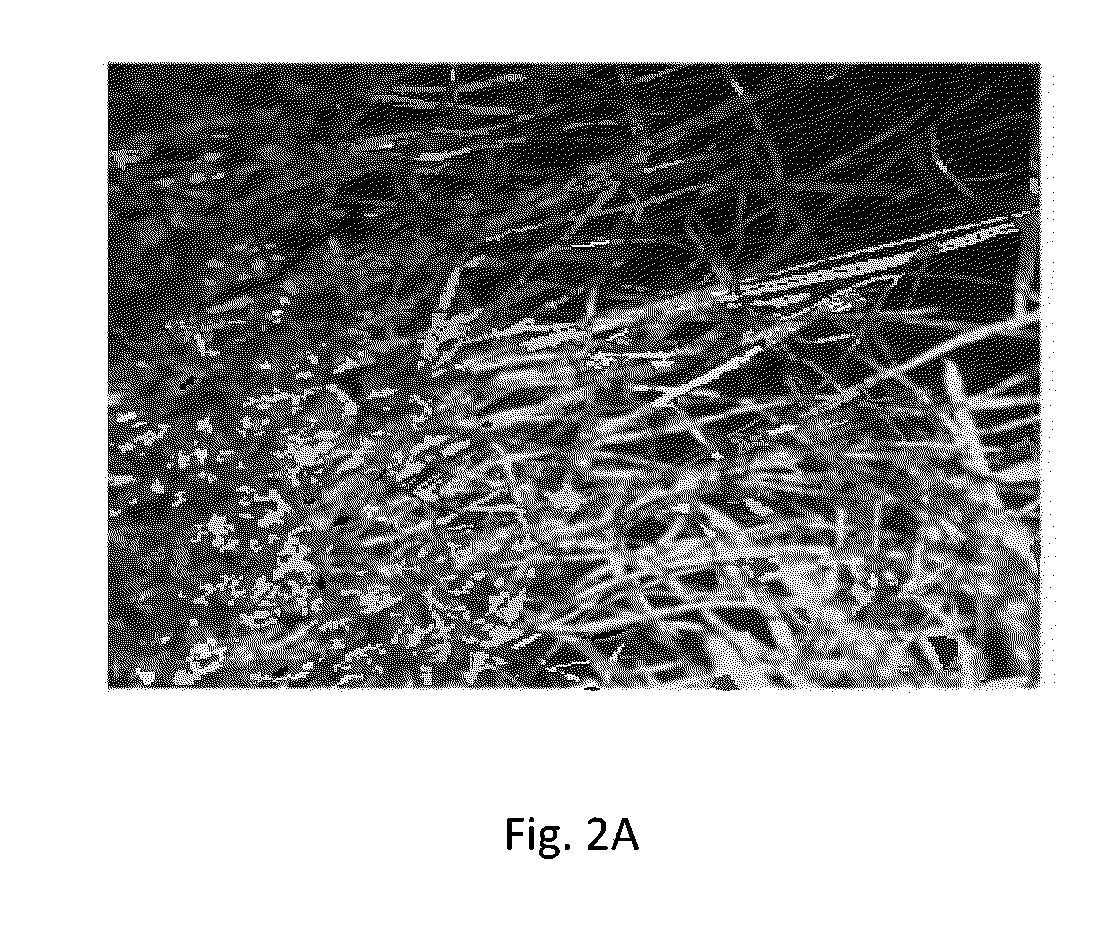3-mode blended fibers in an engineered cementitious composite
a cementitious composite and blended fiber technology, applied in the direction of sustainable waste treatment, manufacturing tools, solid waste management, etc., can solve the problems of cellulose fibers to reinforce cementitious building products, performance issues, and experience progressive degradation, so as to improve the mechanical properties of the composite material, and achieve high surface area. the effect of medium surface area
- Summary
- Abstract
- Description
- Claims
- Application Information
AI Technical Summary
Benefits of technology
Problems solved by technology
Method used
Image
Examples
Embodiment Construction
[0019]Disclosed herein are fiber cement articles reinforced with a fiber blend pre-selected to provide the fiber cement articles with improved mechanical and / or chemical physical properties. Also disclosed herein are fiber blends comprised of synthetic and natural fibers at pre-selected ratios for reinforcing cementitious composite materials and methods for manufacturing. Also disclosed herein are synthetic and cellulose fiber blends adapted to reinforce cementitious composite articles manufactured by the Hatschek process and autoclave cured. Also disclosed herein are fiber reinforced cement formulations that include cellulose pulp and synthetic fibers in a ratio selected to provide a building material with improved water absorption characteristics and the same or improved mechanical properties as compared to equivalent building materials reinforced with predominantly or all cellulose fibers.
[0020]One of the challenges in incorporating synthetic reinforcing fibers, such as polypropy...
PUM
| Property | Measurement | Unit |
|---|---|---|
| weight ratio | aaaaa | aaaaa |
| length | aaaaa | aaaaa |
| length | aaaaa | aaaaa |
Abstract
Description
Claims
Application Information
 Login to View More
Login to View More - R&D
- Intellectual Property
- Life Sciences
- Materials
- Tech Scout
- Unparalleled Data Quality
- Higher Quality Content
- 60% Fewer Hallucinations
Browse by: Latest US Patents, China's latest patents, Technical Efficacy Thesaurus, Application Domain, Technology Topic, Popular Technical Reports.
© 2025 PatSnap. All rights reserved.Legal|Privacy policy|Modern Slavery Act Transparency Statement|Sitemap|About US| Contact US: help@patsnap.com



